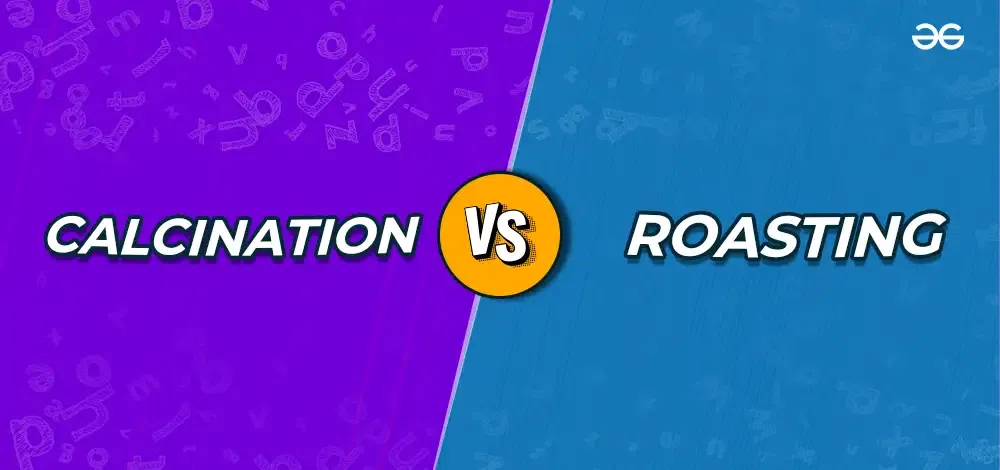
|
|
Calcination and Roasting are two processes of refining carbonate and sulfide metal ores respectively into pure metal forms. Minerals are naturally occurring chemical substances in the Earth’s crust that are obtained by mining. Metals that are known to us are derived from some of these minerals and such minerals are known as ores. The science that deals with extracting metals from ores is known as metallurgy. There are many ways by which metals are extracted from its ore and one such process to extract crude metal from its concentrated ore is conversion to oxide which is further divided into Calcination and Roasting. In this article, we briefly discuss calcination and roasting and the difference between calcination and roasting.
Table of Content What is Calcination and Roasting?Calcination and Roasting are the processes of refining pure metals from their ores. These two processes are used for different types of ores and in different conditions. Let’s learn them in detail below: Calcination DefinitionThe process of converting ore into oxide by heating it strongly either in absence of air or in limited supply of air is known as Calcination. It is a thermal process that is used to convert ores and other solid materials by thermal decomposition. It is mainly used to convert carbonates and hydroxides to their respective oxides. During this process, the reaction mostly occurs at or above the thermal decomposition temperature. Moreover, moisture and volatile impurities are also removed in this process. Hence, it is sometimes considered as a process of purification. The products derived from calcination are known as calcining. Roasting DefinitionThe process of converting ore into oxide by heating it at a temperature below its melting point in presence of air is known as Roasting. It is mainly carried out for sulphide minerals. It consists of solid-gas thermal reaction which includes oxidation, reduction, sulfation, chlorination and pyro hydrolysis. During this process, moisture and non-metallic impurities are released in the form of volatile gases. Roasting is not preferred as it results in the release of toxic gases and compounds that are acidic in nature. All this results in degradation of air quality and contributes to pollution. Difference between Calcination and RoastingThe difference between calcination and Roasting is tabulated below:
Applications of Calcination and RoastingSince, we know the basics of Calcination and Roasting. Let’s learn more about the applications of Calcination and Roasting with the chemical reactions involved in these processes. Calcination ApplicationsCalcination is used to convert carbonate and hydroxide into their oxide. It is used to remove volatile impurities. The reactions involved in the process of Calcination is listed below:
Roasting ApplicationRoasting is used to convert sulphides into their oxides. Non-metallic impurities are removed basically in the process of Roasting. Let’s learn some of the chemical reactions involved in the process of Roasting.
Also, Check Calcination and Roasting – FAQs1. Define Calcination and Roasting.
2. What is Metallurgy?
3. What is the Purpose of Calcination?
4. Why is Calcination done in the Absence of Air?
5. Which Process is Used to Convert Hydroxides into Oxides?
6. Give an Example of Calcination
7. What is Reduction Roasting?
8. Give an Example of Roasting.
9. Why Roasting is Hazardous for Environment?
10. What is Chloridising Roasting?
11. Differentiate between Calcination and Roasting.
|
Reffered: https://www.geeksforgeeks.org
| Class 10 |
Type: | Geek |
Category: | Coding |
Sub Category: | Tutorial |
Uploaded by: | Admin |
Views: | 11 |